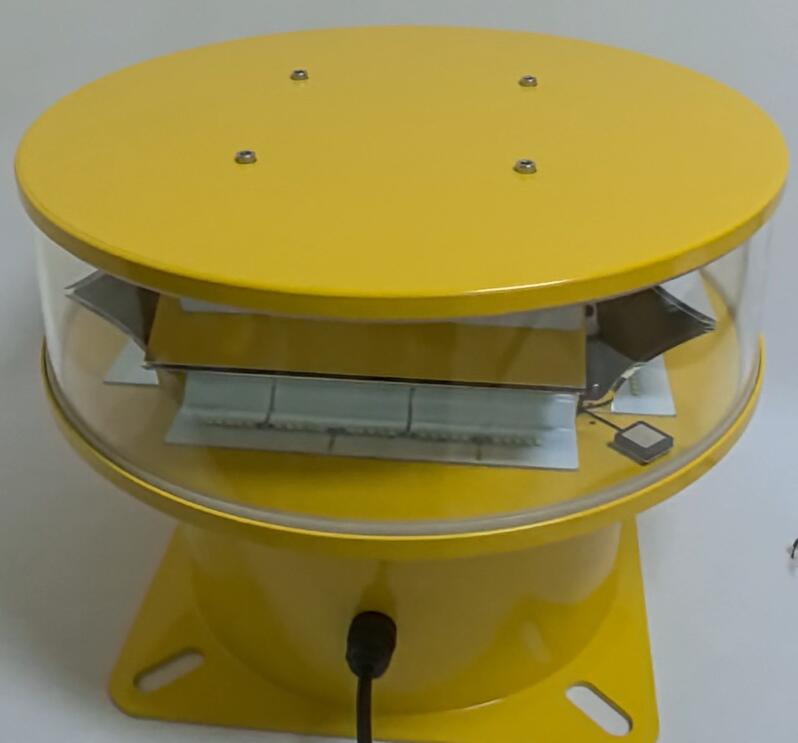Posted: 2024-11-20
Aeronautical obstruction lights play a crucial and non - replaceable role in the field of aviation safety. These lights are designed to ensure that any structures or objects that may pose a threat to the flight path of aircraft are clearly visible to pilots, day and night.
The Basics of Aeronautical Obstruction Lights
Aeronautical obstruction lights are usually installed on tall buildings, towers, bridges, and other structures that are likely to interfere with the flight path of aircraft. There are different types of these lights based on their functions and the height of the obstruction. Low - intensity lights are often used for relatively low - height obstructions. They are usually red in color and emit a steady glow. Medium - intensity lights are brighter and are suitable for obstructions within a certain height range. High - intensity lights are extremely bright and are mainly used for very tall structures such as high - rise communication towers.
These lights are carefully engineered to meet specific photometric requirements. The light intensity, color, and flash pattern are all standardized to ensure maximum visibility under various weather conditions. For example, in foggy or hazy weather, the light needs to be able to penetrate the obscuring elements to be visible to pilots approaching the area.

The Importance in Aviation Safety
The primary reason for the existence of aeronautical obstruction lights is to prevent collisions between aircraft and obstructions. When an aircraft is in flight, especially during takeoff, landing, or low - altitude flight phases, the pilots need to be able to identify any potential hazards in their path. These lights act as a warning sign, guiding the pilots to avoid these obstacles. Without these lights, tall structures could be invisible or difficult to spot, especially at night or in poor visibility conditions, which could lead to catastrophic accidents.
Moreover, they also contribute to the overall air traffic management system. They help in defining the airspace environment more clearly. When air traffic controllers are guiding aircraft, they assume that pilots can see and avoid these lighted obstructions. This in turn helps in maintaining the order and safety of the airspace.
| Aeronautical obstruction lights | 345 |
Installation and Maintenance Considerations
The installation of aeronautical obstruction lights must be carried out in accordance with strict regulations. The position, height, and orientation of the lights on the obstruction are carefully determined. For example, on a tall tower, the lights need to be placed at multiple levels to ensure that they are visible from all directions. The installation process also requires proper electrical connections and grounding to ensure stable operation.
Maintenance of these lights is equally important. Regular inspections are needed to check if the lights are functioning properly. The bulbs may burn out, the power supply may have issues, or the light - emitting diodes (LEDs) may malfunction. Any of these problems could render the lights ineffective. Therefore, maintenance crews need to have a regular schedule to check the lights, replace faulty components, and ensure that the photometric characteristics of the lights remain within the specified standards.
Technological Advancements in Aeronautical Obstruction Lights
With the development of technology, there have been significant improvements in aeronautical obstruction lights. LEDs have become the preferred light source in many cases. LEDs have several advantages over traditional incandescent bulbs. They are more energy - efficient, have a longer lifespan, and can provide more stable light intensity. This not only reduces the energy consumption of the lights but also minimizes the need for frequent replacements.
In addition, some advanced aeronautical obstruction lights are now equipped with intelligent control systems. These systems can adjust the light intensity and flash pattern according to the ambient light conditions. For example, during the day, the lights may be in a standby mode with lower power consumption, and as the night falls or the visibility decreases, they automatically increase their brightness and switch to the appropriate flash pattern.
In conclusion, aeronautical obstruction lights are an essential part of the aviation safety infrastructure. Their proper installation, maintenance, and continuous technological improvement are vital to ensure the safety of aircraft operations. As the aviation industry continues to grow and more structures are built in or near flight paths, the importance of these lights will only increase. We must always be vigilant in ensuring that these lights are functioning optimally to prevent any potential disasters in the air.